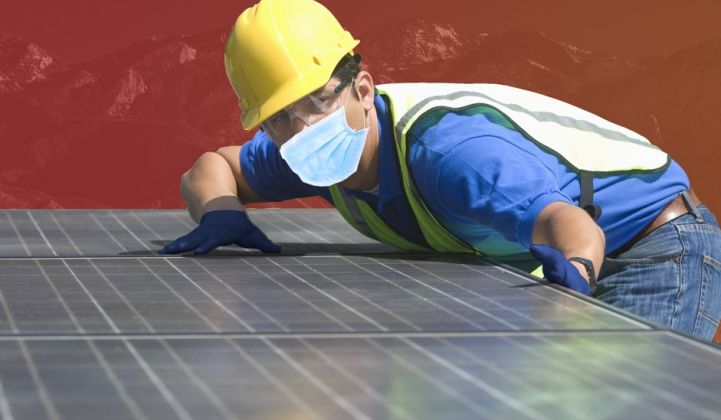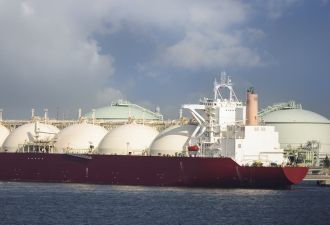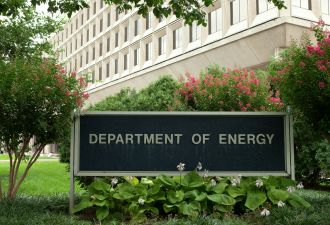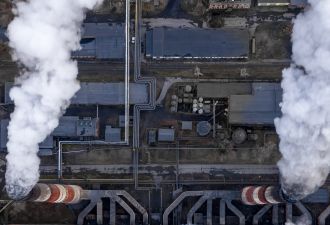Large-scale solar and wind projects face possible coronavirus-related delays, but perhaps no part of the U.S. renewables industry has felt the outbreak's sting more quickly than home solar developers and installers.
The solar industry has pushed to retain its designation as an “essential” industry, allowing it to stand among the businesses that can continue operating during the pandemic. It's unclear, however, whether there will be much work to be had for companies that rely on selling solar systems door-to-door or signing on homeowners willing to enter a long-term contract.
Energy consultancy Wood Mackenzie Power & Renewables expects to revise downward its 2020 residential forecast by 23 to 40 percent. For businesses and customers alike, the future looks exceedingly uncertain.
The whole of the renewables industry is assessing the inevitable impacts of COVID-19. The residential sector is already smarting.
“No one is being spared — everything is down across the board,” said Bernadette Del Chiaro, executive director at the California Solar and Storage Association, in an email this week.
“Herky-jerky” demand
John Berger, CEO of Houston, Texas-based Sunnova, said sales have been “herky-jerky” since COVID-19 began shutting down cities, counties and states across the U.S.
“Some days are good; some days are not so good,” Berger told Greentech Media. “The sales are definitely down.”
Less than 10 percent of residential solar companies responding last week to a survey conducted by the Solar Energy Industries Association trade group said business is continuing as usual. Instead, the majority of companies reported a severe curtailment in business. Layoffs have started in earnest.
California, the country’s largest residential solar market by a wide margin, instituted a statewide shelter-in-place order on March 19 (six Northern California counties established additional restrictions. halting most construction as of March 31). That’s led some installers to close and put permitting processes on ice as local departments learn how to process paperwork electronically.
California's statewide slowdown could be a window into the future for other areas of the country, as the virus cascades beyond its current U.S. epicenters on the coasts. Because of a lack of top-down federal restrictions, local and state governments have taken to establishing their own protocols. Tracking by the New York Times showed shutdowns or partial shutdowns are in place in at least 37 states as of Wednesday afternoon.
Demand is winding down more slowly for installers working in areas where shutdown orders haven’t been put in place, but that could change quickly.
“We really don’t know what’s going to happen in the next 10 days,” said Russell Seifert, CEO at Georgia’s Creative Solar, in an interview last week. Georgia Governor Brian Kemp resisted mandating a statewide shutdown for weeks. The state government finally put one in place on Wednesday, though it will last only from April 3 to April 13.
Seifert said Creative Solar’s work in rural Georgia continues, though the shutdown order in place in Atlanta has decelerated work there. This week, Seifert said, installs continue to decline. The company has laid off three people and plans to apply for a loan from the Small Business Administration.
SunPower, which sells distributed solar systems nationwide, chose to cut salaries at the top of the company in March, in part due to an anticipated drop in demand. That trend was “correlated with where there are the most restrictions on movement,” said CEO Tom Werner, including California and New York.
On Tuesday, the New York State Energy Research and Development Authority published guidelines pausing most on-site work from clean-energy contractors until April 15, with an extension likely.
New sales and installation procedures for a different time
Residential solar companies are grasping for anything that may soften the decline. Sunnova’s Berger framed solar as a “savings product” that may entice customers in an economic downturn, echoing similar comments made by Sunrun’s Lynn Jurich in late February.
Companies like Sunnova are also instituting new installation procedures that maintain a safe distance between workers, hoping to ensure they’re able to continue operating under the “essential” categorization.
“We’re advising folks [that] if they feel they can adhere to the social-distancing guidelines and standards that have been put out by CDC and OSHA, that they should consider themselves an essential service…and comply with any local official that tells them otherwise,” said Del Chiaro.
Installers at the Georgia firm Creative Solar now call customers on the phone when they arrive at a house, rather than knocking on the door and speaking face-to-face with the owner. SunPower and Sunnova now require employees to arrive at worksites in separate vehicles.
And while many customers may not be thinking about solar now, Del Chiaro said that could change as customers spend more time at home, particularly in California where fire season is always around the corner and self-generation has emerged as a solution to public-safety power shutoffs.
A V-shaped solar recovery?
If shutdowns at local permitting offices persist — CalSSA is tracking which jurisdictions in California are still accepting permit applications — the state’s industry worries it will struggle to keep up with demand once it rebounds.
“California is jumping from one crisis to another. […] Blackouts are going to be upon us” before long as fire season arrives, said Del Chiaro.
“When consumers get out of their state of shock and pick up the phone to go solar and storage, we might have a major bottleneck as we head into the fall fire season.”




